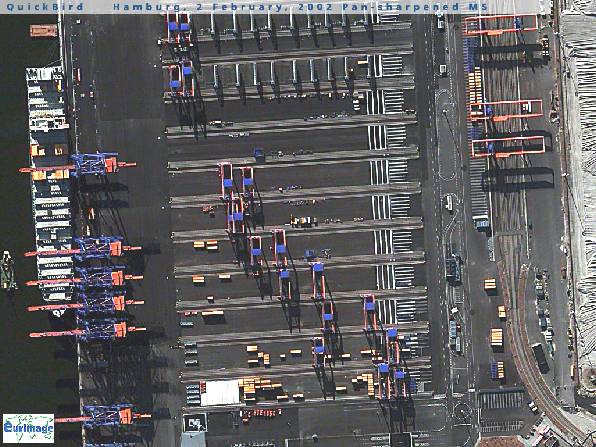
The scene resembles that of an Orwellian science fiction film — without a single human being around, the giant Chinese container ship Shenzhen is unloaded in Hamburg Harbor, a port in northern Germany.
The steel cranes in the super-modern Altenwerder terminal, completed in 2003, pick up the ship’s roughly 7,500 containers with the help of video cameras, and the loading vehicles that buzz back and forth from the cranes, shouldering their cargo, are directed solely with the help of a computer.
The vehicles are steered by GPS systems — they know when and where to stop or go; in a strange manifestation of German correctness, they even flash their turning signal before making a left or right turn.
In times of rising oil prices, transporting goods via trucks is becoming increasingly expensive — no wonder many companies are using the cheap container to transport their goods. Wonder why there is so much cheap wine from South America and Australia in your local store? With giant container ships like the 984-feet-long Shenzhen, the transport cost of a bottle of wine is at roughly 8 cents.
With all the additional business, Hamburg port authorities had to invest into improved security measures. After the terrorist attacks of September 11, 2001, the International Maritime Organization called on ports all over the world to implement its new security standards, the International Ship and Port Facility Security Code.
He added authorities made investments in the three-digit millions range.
“They ranged from new gates to beefing up security staff to implementing entirely new surveillance technologies.”
Completely automating storage-and-retrieval systems is nothing new. But, doing it with containers — picking off a ship — is new and dependent on precise GPS and accurate records in the first place. Giving new meaning to “garbage in, garbage out”.















Trucks obviously cannot travel over water, but nearly one hundred percent of pick ups and deliverys are made by truck. Trains and ships carry most of the long haul container freight, but it takes a truck to get from either railhead or port facility to the end destination. And when time is of the essence then trucks will get the call even for long, overland hauls.
But I wouldn’t want to be a pedestrian in an automated container handling facility; those places are freaky enough with humans operating the machines.
Maybe Homeland Insecurity could learn a lesson or two from the Germans. When they upgraded the facility, they also upgraded the security.
The line about the automated cars have turning lights: Well if there were man-driven cars, it would be safer for people as they would know where the automated cars were going.
I agree with regards to the security. Having a fully automated security process would likely be much faster. I’m not sure if our current security measures are built on random checks, but you could eliminate that with automation.
Also machines will never do something half-assed because it’s been a long day, and they just want to get home to the family.